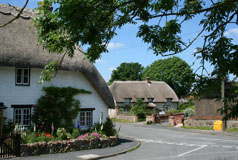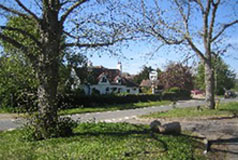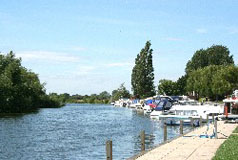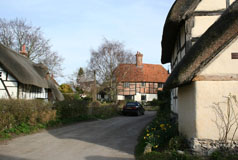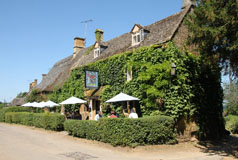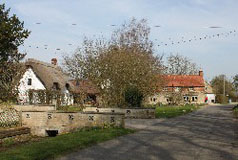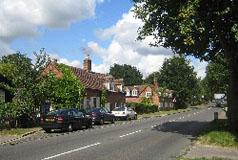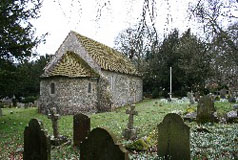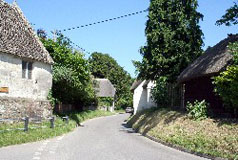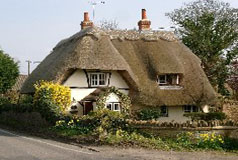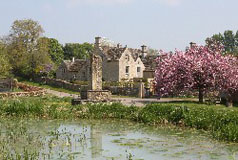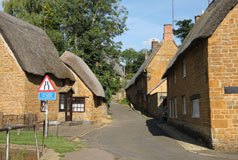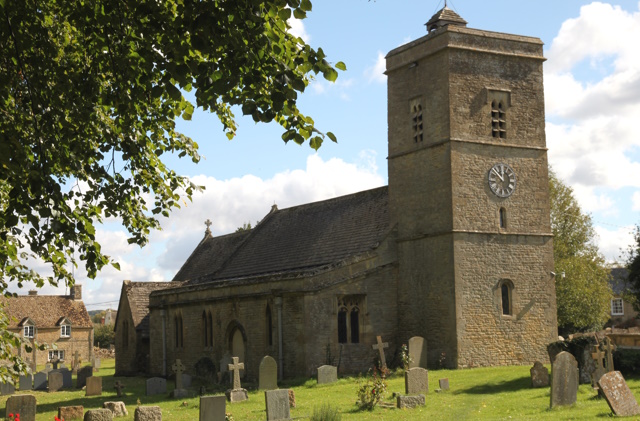
Holy Trinity Church is late 12th century, altered in the 14th century and restored 1857 by Street. Built of rubble
with Cotswold stone roofs. Two-bay chancel, 3-bay nave with low north aisle, 3 stage west tower with plain parapet. Gabled south porch and south transept;
vestry to north-east (1857-9). Two lower stages of tower and the side windows of
chancel are circa 1200 lancets, latter in wide reveals, nave and north transept
probably of the same period but with 14th century windows of ogee pattern, a north door of
that period in the aisle and a late 14th century stepped 3-light lancet with cusped heads and
nave (restored). Reticulated east window (possibly by Street). Paired 15th century lancets
to upper stages of tower and crenellation. Square-headed 2-light windows with
stilted-arch lights to east and south walls of south transept. The south porch has
Norman impost capitals and a chamfered archway with pyramidal steps; inner arch of
early 13th century. Wooden priest's door with shouldered lintel.
Interior: 4-bay late 12th century arcade, one capital with scallops, 2 square piers, labels
with pyramidal stops. Chancel arch and arch to south chapel double chamfered and
with moulded caps - probably early 13th century. The best feature is the triple sedilia with
foiled head arcade to front part (also to be seen at Shipton and at Idbury - latter
so similar as to suggest the same masons). 15th century pillar piscina. 17th century communion table
(north aisle). Font octagonal 15th century chalice type. Furnishings, and nave and chancel
roofs by Street. A few low late mediaeval pews survive.
Holy Trinity Church is a Grade II* listed building. For more information about the listing see CHURCH OF THE HOLY TRINITY, Ascott-under-Wychwood - 1368158 | Historic England.
|
